The Land Of China -- Explore by Province
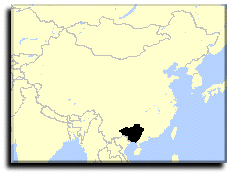 |
 |
Guangxi
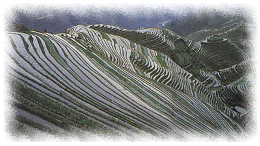
|
Capital city, Nanning (Southern Peace), was founded in 214 B.C. The Guangxi Museum displays botanical and zoological specimens, historical relics, and Taiping history. It also boasts the largest collection of bronze drums (over 300) in China. South Lake Park has 1200 varieties of medicinal herbs, plus orchids and bonsai. The Yiling Cave, much like a Guilin cave, has colored lights to highlight unique rock formations that look like lions, hens, and vegetables.
A visit to a minority village or to the Institute of Nationalities will help visitors see art, music, dances of various nationalities. The minorities have their own colorful festivals as they sing songs, hold dragon boat races, dance, or light firecrackers on these occasions. It is fascinating to watch or participate in these intriguing activities. One of these villages, Jintian Village, is where Taiping Heavenly Kingom originated. It is the most extensive peasant uprising in Chinese history.
Liuzhou, a city immediately west of the Guangdong province, was founded in 111 B.C. It is blessed by colorful minorities, karst caves and hills. The Liu Marquis Temple and Tomb was built in honor of Liu Zongyuan, a famous Tang writer and for four years provincial governor. In the Bai Lain Cave, a Liujiang Man lived 20,000 -30,000 years ago.

|
Yufeng Hill shoots up like a fish, 88 meters high in Yufeng Park. It is said that the hill still has remains of the Third Sister Liu. A statue of her has been set up where she performed antiphonal singing and rose to heaven. Halfway up the mountain there are seven rock caves including the Arhat Cave, Carp Cave and others linked together. In the caves there are more than 50 small dragon pools running into the Liujiang River through rock crevices. Lu Yu, the Tang Dynasty scholar listed Big Dragon Pool as one of the world's most famous springs.

|
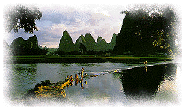
|
Located 65 kilometers southeast of Guilin City is the county of Yangshuo. Surrounded by 10 peaks, the county looks like a green lotus. Houses are dotted among the rows of mountain peaks, and the scenery here is reputed to be Guilin's best. Each spot has its own unique characteristics. Yangshuo also offers another aspect of the karst landscape that seems to stretch forever. Well-known scenic attractions include Green Lotus Peak and Old Ferry Under the Banyan. To the north of Yangshuo is Xingping, a small city with a long history. During the Jin Dynasty (265-420), Xingping was a district capital. This peaceful and romantic spot is an ideal place to observe life in the country.
Zhongshan and Fuchuan counties, some 50 kilometers from Nanning, are inhabited by the Yao people who have kept their own work and living habits and their own language and customs. The landscape here varies from hills to karst and basins. Scenic spots include the ancient road of the Qin, carved rocks of the Ming and Qing Dynasties, Small Zhongshan Hill, the tombs of the Han Dynasty, and the ruins of ancient Fuchuan.
Guilin, City of Cassia Trees
"I often sent pictures of the hills of Guilin which I painted to friends back home, but few believed what they saw." The writer is Song-Dynasty scholar Fan Chengda, and his comments show that the scenery of Guilin has been attracting and astonishing visitors for many centuries. It has also been the inspiration for classical Chinese landscapes of fantastically shaped peaks, studded with pines and small pavilions that are partly shrouded in mist.
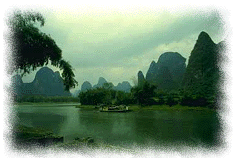
|
The best hills for climbing are found in the north of the city. Fubo Hill rises from the banks of the river and offers superb views from its summit, while halfway up is a huge cooking pot and a bell weighing 2.5 tons. At the base of Fubo is the Returned Pearl Cave with 300 Buddhist carvings on its walls.
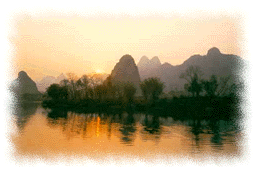
|
Reed Flute Cave (Ludi Yan) is located in the northwestern section of Guilin. It is 240 meters deep and is probably the largest and most magnificent cave in Guilin. Ludi Cao, reed grass, grows in front of the cave and can be used to make the most wonderful flutes. This is what gave the cave its name. It used to be a popular place for the local people to hide themselves in times of war or trouble. Situated at the southern foot of Guangming Hill, the cave is a huge and fantastic cavern eroded out of a karst formation. It is lined along its entire 500-meter zigzag length with stalactites and stalagmites in the shapes of agination forms. They include Shilin Zhaoxia (lion and forest under the glow of dawn), Gaoxia Feibo, (flying waterfall from the high gorge), Primitive Forest, Crystal Palace, Xiongshi Songke and others. Beautiful, colourful, and fantastic, the cave has been as widely acclaimed as an "Art Gallery of Nature."
Seven Star Park is one of Guilin's most important sights on the Lijiang's west bank. The seven stars symbolize the seven mountains around which the park grounds were laid out. The mountains are arranged in the order of the seven stars in the Big Dipper. The four northern mountains make up Putuo Shan while the remaining three southern mountains form Yueya Shan. Many large caves are located on Putuo Shan. Qixing Yan, Seven Star Cave, is one of these. The Seven Star Cave is located on the western slope of Putuo Mountain in Guilin city. It is the largest and most fascinating cave in Guilin and contains three layers. The upper layer is roughly 8-12 meters higher than the middle one. There is a 1,000-meter-long tunnel that is a gallery of stalactites and stalagmites of the most spectacular shapes and forms. The cave became a tourist attraction as early as the Sui and Tang dynasties (518-907 AD). Over the centuries, many poems and other inscriptions have been left behind on its interior walls by scholars.
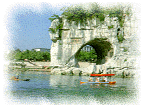
|



 Chinese Culture
Chinese Culture